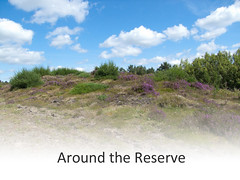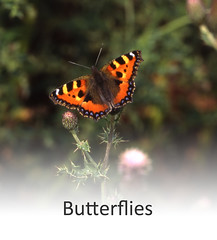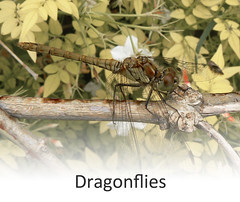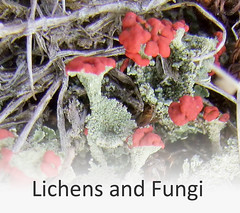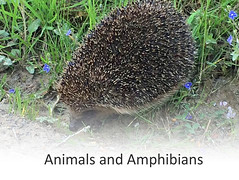The combination of moorland, forest, grassland and ponds forms a special habitat for birds. The ponds have breeding populations of wildfowl, ground-nesting birds occupy the heathland, while the woodland supports various birds of prey, jays and woodpeckers, as well as many small woodland birds. In recent years migrating osprey's have made brief stop-overs in the reserve. Nearby, in Slaley Forest, is one of the North East's most important nightjar colonies, to which the Reserve organises guided visits at appropriate times of the year. We have strategically placed nest boxes for small birds, owls and kestrels, as well as a purpose-built nesting wall.
Until about 20 years ago this part of Northumberland was a stronghold of the red squirrel. Sadly this delightful animal has disappeared from most of the county, replaced by grey squirrels. Slaley Forest is one of a few isolated sites where red squirrels have survived and a determined community effort is being made to protect them. Reds visit the Ladycross Reserve and are seen from time to time sharing the bird feeders.
Ladycross is a good place to study the way that plants recolonise disturbed ground. On the restored areas of worked-out quarry all stages of the process can be seen, from initial colonisation by algae and lichens, through the growth of mosses, sedges and heathers, to mature grassland and scrub. There are interesting colonies of club mosses and good examples of heathland and upland grassland wild flowers and waterside plants.
The vegetation and the ponds support a rich insect life. Eight species of dragonflies can be seen around the ponds - an exceptional number for such a high altitude, and the grassy areas are an excellent place to see all the familiar northern butterflies with occasional visits from scarcer species such as green hairstreak and brimstone. Bumblebees abound, and night-time monitoring has revealed the presence of over 100 species of moths.
The reserve and the surrounding forest produces a wonderful display of fungi each autumn, and our annual fungus forays are very popular.
Art and Nature
We have used natural local materials to create structures that combine artistic creativity and a sense of the natural world. The beautiful prize-winning raptor watch point occupies a high point of the reserve with panoramic views to the north and of the sky for miles around. A stone circle of the biggest monoliths quarried from the site over the years is orientated as a nature calendar reflecting major events of the natural year, while a high stone wall designed to reflect the landscape and rock forms in the quarry acts as a bird nesting wall and as a hibernating place for bats. With the collaboration of the Forestry Commission we have also laid out a circular walking route through the forest, marked by standing stones sculpted by local artist Gilbert Ward.
The pictures in the photogalleries below illustrate some of the features and wildlife you can find at Ladycross.
